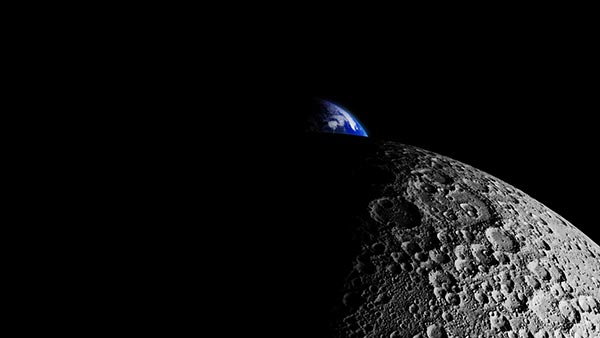NASA will find alien life in the next 25 years, experts predict
By kevinhughes // 2023-06-07
Tweet
Share
Copy

Experts believe that humanity is on the cusp of detecting alien life within the next 25 years.
These same experts said that the James Webb Space Telescope (JWST) launched by the National Aeronautics and Space Administration (NASA) helped pave the way for gathering more information on distant worlds. (Related: We may finally find ALIENS by 2026, thanks to NASA's new space telescope.)
According to Sasha Quanz, an astrophysicist from the Swiss Federal Institute of Technology, aliens will be verified in two and a half decades.
Her statements on the discovery of alien life are echoed in the latest research from the University of California that said extraterrestrial beings will make contact with humans by 2029, but not with the aid of telescopes.
The study examined the radio wave transmissions sent by NASA's Pioneer 10 probe. These signals reached a star about 27 light years from Earth as transmission disperses when it contacts an object.
The researchers hope this signal was caught by extraterrestrials that returned a recall to Earth which, if their calculations are correct, should reach the planet by the year 2029 – 27 years after they sent it.
The JWST has already identified carbon dioxide and sulfur dioxide in the atmosphere of two exoplanets beyond the solar system, which is the first-ever observation of this kind. This is due to JWST being able to examine molecules in the atmosphere of remote worlds and recognize those vital for life.
NASA already building more powerful space telescope to search for life
Building off of the dramatic successes of the JWST, NASA is already working on its multibillion-dollar successor, which is set to search for life on Earth-like planets as soon as the early 2040s, known as the Habitable Worlds Observatory (HabEx). HabEx will analyze the air of Earth-like exoplanets for signs they could maintain life. Mike Menzel, lead mission systems engineer for the JWST, noted how HabEx would one day be able to locate "fingerprints" of possible life in the atmospheres of exoplanets – thanks to the currently in-development state-of-the-art spectroscopes. "There are two types of science instruments," explained Menzel. "Cameras that produce images and spectroscopes that produce rainbows." The JWST was not designed to examine exoplanets, just ancient stars in the universe, but its abilities have exceeded expectations. The colors of the rainbow formed by spectroscopes are present due to a definite molecule identified in an atmosphere and the JWST is simply able to take a snapshot of it. "I think Mike's analogy of a rainbow is a good one. You're spreading the light into its different colors, but the key is that what we're comparing is when the planet is passing in front of the star versus when it's behind the star," said Lee Feinberg, JWST's optical telescope manager at NASA Goddard Space Flight Center in Greenbelt, Maryland. Feinberg added that what helps the JWST make these comparisons is that its powerful sensors can see farther beyond the visible light spectrum than earlier telescopes like Hubble could. This enables scientists to see the amount of water, sodium, carbon dioxide and methane hiding in the atmosphere, which they can investigate further. "There are a lot of molecules, classic examples being carbon dioxide and water, where the best wavelength to do it is in the infrared where Webb sees," said Feinberg. "Which is why, very early on, Webb made the first ever confirmed detection of carbon dioxide in an exoplanet's atmosphere." HabEx will be doing something similar to the JWST and will look for possible signs of habitability in the atmospheres of exoplanets by searching for signs of water and other biosignature gases, along with oxygen and ozone. "HabEx will be sensitive to all types of planets," said NASA in a statement. "However its main goal is, for the first time, to directly image Earth-like exoplanets and characterize their atmospheric content." Follow Space.news for more news about the search for alien life. Watch the video below to learn more about extraterrestrials and America's secret space programs. This video is from the AMPNews channel on Brighteon.com.More related articles:
European Space Agency launches probe to search for alien life on Jupiter’s icy moons. Latest study that uses AI discovers 8 probable alien “technosignatures” near distant stars. Breakthrough Listen Project and NASA collaborate on the search for advanced alien civilizations. Sources include: DailyMail.co.uk DailyStar.co.uk Brighteon.comTweet
Share
Copy
Tagged Under:
earth space research aliens NASA space exploration solar system extraterrestrial life future science exoplanets future tech goodscience cosmic James Webb Space Telescope JWST Habitable Worlds Observatory
You Might Also Like
Eleven signs that humanity is DOOMED and won’t survive much longer on planet Earth
By Mike Adams // Share
Want to improve your brain health naturally? Eat more fermented, cultured foods
By Ethan Huff // Share
U.S. investigators say covid came from classified bioweapons program at Wuhan lab
By Ethan Huff // Share
Recent News
The BRICS Awakening: The end of dollar dominance and the rise of gold-backed trade
By ramontomeydw // Share
Trump announces fraud investigation targeting California
By lauraharris // Share
Natural remedies and TCM techniques to soothe holiday indigestion
By dominguez // Share











